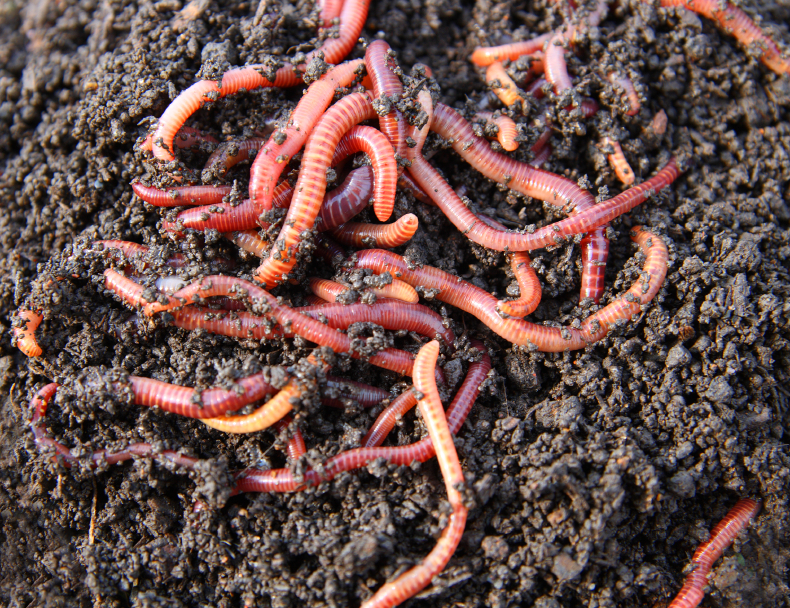Produce compost
Make nutrient-rich compost by collecting kitchen scraps and garden waste, layering materials, keeping them moist, and turning the pile regularly to speed decomposition.



Step-by-step guide to produce compost
🗑 Composting for Kids | What is Composting? | Fact Files for Kids | Twinkl USA
Step 1
Gather all the Materials Needed and bring them to your chosen outdoor work area.
Step 2
Put on your gloves so your hands stay clean and safe.
Step 3
Choose a level shady spot in your yard to keep the compost cool and out of heavy sun.
Step 4
Place your compost bin in the spot or mark the area where your compost pile will sit.
Step 5
Make a 4 to 6 inch base layer of coarse brown material like twigs or straw at the bottom for airflow.
Step 6
Add a thin even layer of kitchen scraps (fruit and vegetable bits only) over the base layer.
Step 7
Add a thin layer of dry browns such as shredded newspaper or dry leaves on top of the scraps.
Step 8
Sprinkle water over the layers until they feel like a wrung-out sponge to give microbes moisture.
Step 9
Repeat adding a green layer then a brown layer until the bin or pile is nearly full.
Step 10
Cover the pile with the bin lid or a board to keep out heavy rain and curious critters.
Step 11
Turn the compost with a garden fork every 3 to 7 days to add air and speed up breaking down.
Step 12
Keep the pile damp like a wrung-out sponge by adding water when dry or adding dry browns if it gets too wet.
Step 13
When the material is dark crumbly and smells earthy take some to use in your garden to help plants grow.
Step 14
Take a photo of your finished compost and share your creation on DIY.org
Final steps
You're almost there! Complete all the steps, bring your creation to life, post it, and conquer the challenge!


Help!?
What can we use if we don't have a compost bin, straw, or shredded newspaper?
If you don't have a compost bin use a sturdy trash can with drainage holes or simply mark a pile area, replace the 4–6 inch straw/twig base with crumpled cardboard or small branches, and tear plain paper or junk mail instead of shredded newspaper.
The pile smells bad or isn't breaking down — what could be wrong and how do we fix it?
A bad smell or slow breakdown usually means too many kitchen scraps or not enough air and moisture balance, so add dry browns like shredded newspaper or dry leaves, turn the compost with a garden fork every 3–7 days, and adjust water until it feels like a wrung-out sponge.
How can we adapt this composting activity for younger children or older kids?
For younger kids let them help with safe steps like putting on gloves, adding kitchen scraps, and sprinkling water while an adult handles turning with the garden fork, and for older kids have them track turns every 3–7 days, monitor moisture/temperature, or try hot-compost methods.
How can we extend or personalize the project to make it more fun or useful?
Decorate the bin, add a compost thermometer to monitor heat as you turn the pile, start a worm bin to speed up decomposition, and keep a photo log of your dark, crumbly finished compost to share on DIY.org.
Watch videos on how to produce compost
Composting for Kids
Facts about composting and soil health
♻️ Up to one-third of household trash can be composted—food scraps and yard waste are a big part of household garbage.
💧 Adding compost improves soil structure and water retention, so plants need less frequent watering.
🚫 Avoid adding meat, dairy, or oils to backyard compost—they attract pests and slow down decomposition.
🌡️ Hot compost piles can reach 55–65°C (131–149°F), which helps kill weed seeds and many plant pathogens.
🐛 Red wiggler worms used in vermicomposting can eat roughly their own weight in food each day.
How do I make nutrient-rich compost with my child at home?
What materials do I need to make compost with kids?
What ages is composting suitable for and what supervision is needed?
What are the benefits of making compost with children?


One subscription, many ways to play and learn.
Only $6.99 after trial. No credit card required



